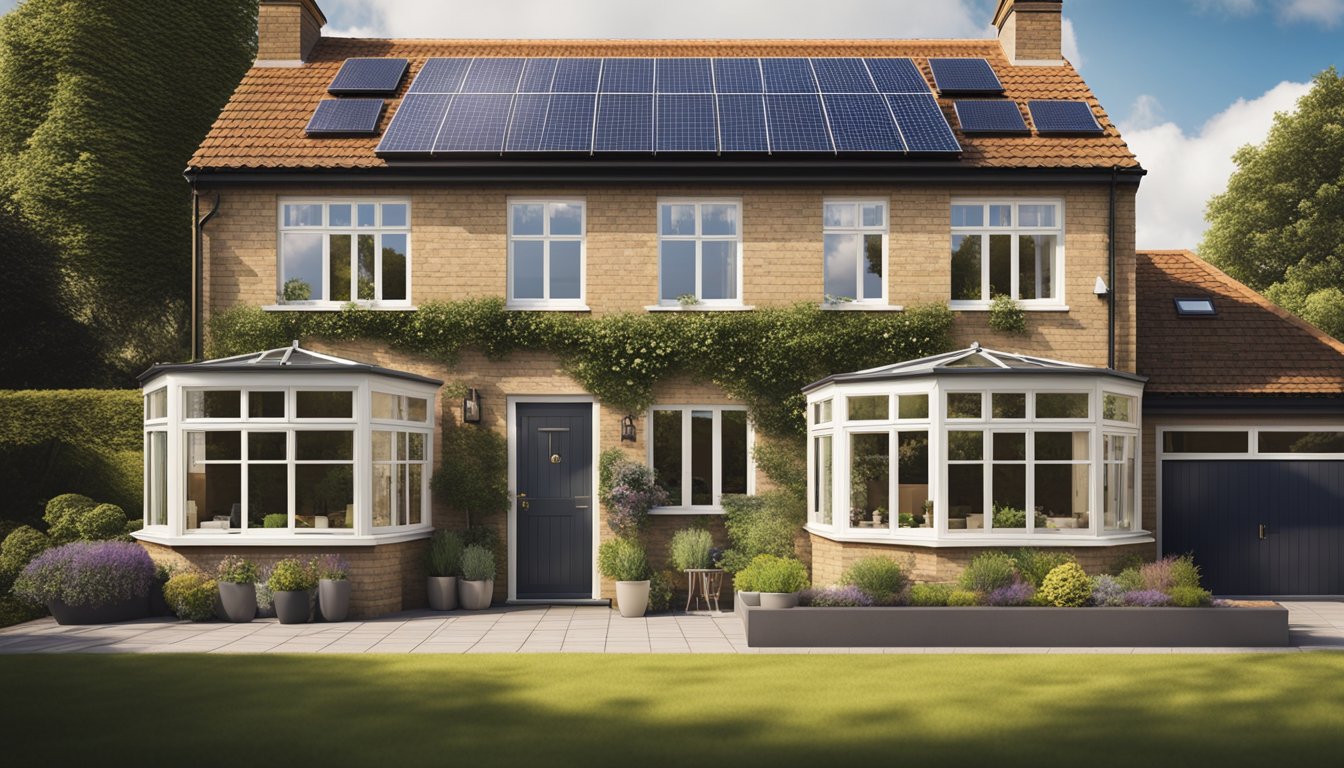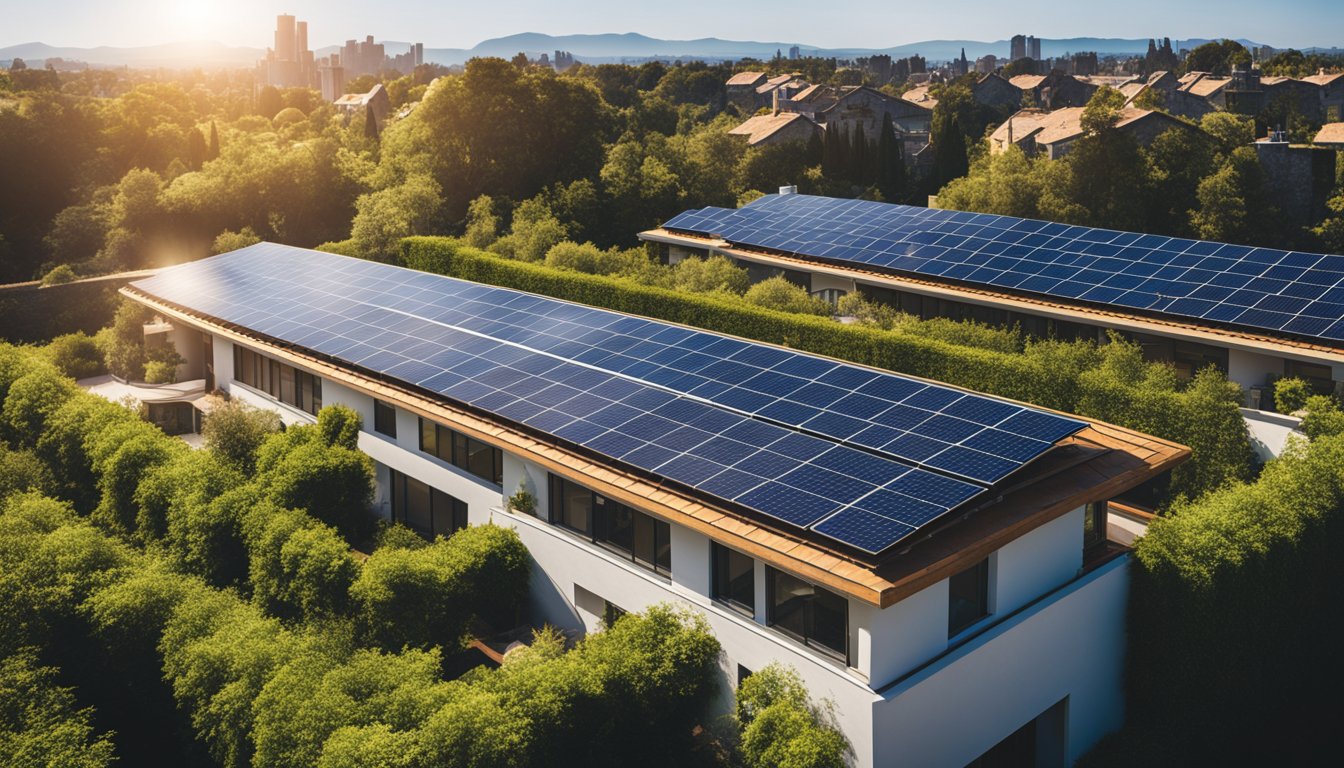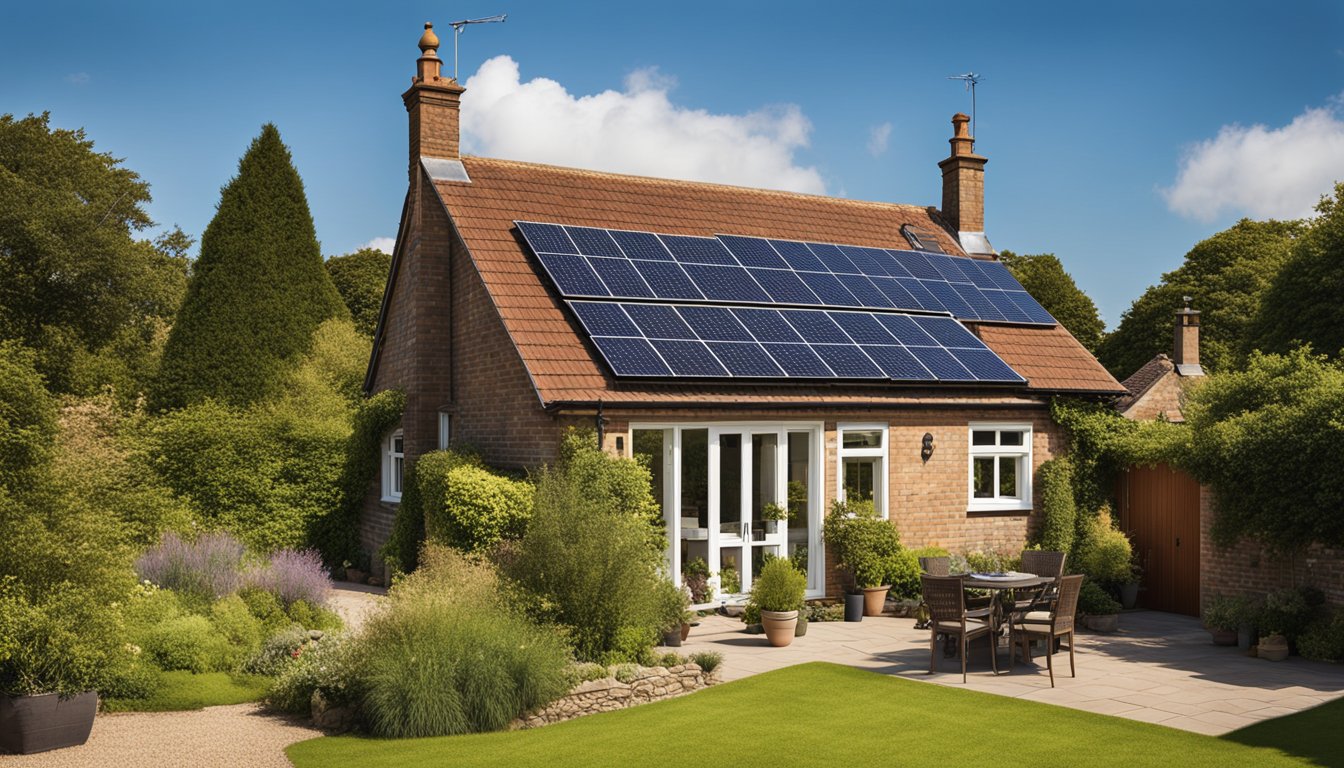Late updated: 05 Nov 2024 11:11
Written by: Oliver Bennett
Energy-Saving Roofing Tips For UK Homeowners: Enhance Efficiency and Cut Costs
In an era where sustainability and cost-efficiency are at the forefront of our minds, finding ways to save energy in our homes is more crucial than ever. A major component of this effort is our choice of roofing, a decision that can dramatically impact energy usage. Energy-efficient roofing materials, such as clay or concrete tiles, provide excellent insulation, keeping homes cooler in the summer and preventing heat loss in the winter. By considering these options, we can make significant strides in energy conservation.

The advancement of eco-friendly materials and technologies in the roofing industry provides UK homeowners with exciting opportunities. These innovations not only support reduced energy use but also contribute to a sustainable future. As we explore these options, it becomes clear how simple changes to our roofing choices can lead to substantial savings and environmental benefits.
By understanding the role of roofing in energy efficiency, we are better equipped to make informed decisions. This knowledge prepares us to tackle common questions and highlights the practical steps we can take. Engaging with these energy-saving strategies can help us enhance our home's efficiency and reduce our ecological footprint.
Key Takeaways
- Choose energy-efficient roofing like clay or concrete for better insulation.
- Eco-friendly roofing technologies offer significant energy savings.
- Understanding energy-efficient roofing leads to informed decisions.
Understanding the Importance of Energy-Efficient Roofing
Energy-efficient roofing is crucial for reducing heat loss and lowering energy bills in UK homes. By enhancing insulation, ventilation, and choosing sustainable roofing materials, we can achieve significant energy savings and improve energy performance.
Evaluating Your Current Roof's Energy Performance
Assessing the energy performance of our current roof is the first essential step. We can start by checking the energy performance certificate (EPC), which indicates our home's energy efficiency. An examination of the EPC can reveal weaknesses in heat retention, which often points to potential improvements in our roofing.
Regular inspections help identify any areas where energy efficiency might be compromised, such as gaps, leaks, or damages. We should consider infrared thermography to detect heat loss efficiently. Particular attention should be paid to roof windows and seals, as they can significantly affect energy performance.
How Insulation and Ventilation Affect Energy Savings
Proper insulation and ventilation are critical components of energy-efficient roofing. Roof insulation acts as a barrier, maintaining the desired temperature inside our homes and reducing heat transfer. Materials such as fibreglass or foam offer effective solutions, helping us achieve optimal thermal efficiency.
Ventilation works alongside insulation to balance airflow, preventing humidity build-up and maintaining air quality. Poor ventilation can lead to condensation, impairing insulation effectiveness. This combination can preserve energy savings and extend the lifespan of our roof.
The Role of Roofing Materials in Heat Loss Prevention
Sustainable roofing materials play an integral role in energy efficiency. When choosing a roof, considering materials that reflect sunlight and reduce heat absorption can make a big difference. Options like cool roofs, which are designed with reflective surfaces, help minimise heat retention.
Using tiles, metal, or composite materials can offer both durability and energy efficiency. These materials help limit heat loss and, combined with good insulation, enhance overall energy performance. By investing in sustainable choices, we can lower our environmental impact and boost the energy efficiency of our homes.
Practical Energy-Saving Roofing Solutions

As energy costs soar, UK homeowners are exploring various roofing solutions to improve energy efficiency and reduce carbon footprints. From insulation methods to cutting-edge technologies, practical measures help keep utility bills in check.
Insulative Measures: Loft and Flat Roof Insulation
Loft insulation is one of the most effective ways to save energy. By adding a layer of insulation, we can retain heat during winter and keep our homes cooler in summer, thus reducing the need for excessive heating or air conditioning. This straightforward improvement can also lower energy bills and make homes more comfortable year-round.
Flat roof insulation offers similar benefits. We need to consider using materials that provide strong thermal resistance. Professional installers often recommend techniques like installing rigid foam boards or applied systems like liquid-applied membranes. Each method varies in cost and efficiency, but both options help in retaining heat and cutting down on energy usage.
Advanced Energy-Saving Technologies: Solar Panels and Heat Pumps
Installing solar panels on our roofs can generate renewable energy. This technology not only reduces reliance on the grid but also contributes to lowering energy bills. Feed-in tariffs and other incentives can make this investment more appealing and economically viable for UK homeowners.
Heat pumps, whether air or ground-source, serve as efficient heating and cooling systems. When integrated correctly, they can drastically cut down electricity usage compared to traditional heaters. Together, solar panels and heat pumps form a formidable duo in our quest to embrace sustainable energy solutions.
Sealing the Home: Draught Proofing and Glazing Options
Draught proofing is essential for stopping unwanted cold air from entering and warm air from escaping. We can tackle this by using draught excluders on doors and windows, along with sealing gaps around pipework and loft hatches. These measures reduce heat loss significantly.
Glazing options play a crucial role too. Upgrading to double or triple glazing can further enhance a home's thermal efficiency. By replacing old windows, we not only seal in warmth but also keep out street noise, improving overall comfort. Proper installation is key in ensuring these measures deliver the expected energy savings.
Grants and Incentives for Energy-Efficient Roof Upgrades
Various grants and incentives are available to encourage energy-efficient home improvements. The Energy Company Obligation (ECO) scheme helps lower-income households benefit from required upgrades. Through this, we can access loft and roof insulation services or install energy-saving technologies.
Programmes like Help to Heat provide useful financial support. They assist in decreasing the upfront cost of significant improvements, making innovations like heat pumps more accessible. To maximise the benefits, we should consult professional installers familiar with these schemes. Budget-friendly solutions allow us to contribute positively to the environment without compromising our finances.
Frequently Asked Questions

Our exploration dives into materials best suited for energy-efficient UK roofing, ways to enhance insulation, the impact of solar panels, roof ventilation's role in energy-saving, maintenance tips, and differences in energy savings between roof types. Each topic adds a layer of understanding to optimise energy efficiency in our homes.
What materials are best suited for energy-efficient roofing in the UK?
In the UK, materials like slate, clay tiles, and metal roofs are commonly recommended due to their durability and energy efficiency. These options provide excellent thermal insulation and can withstand the British climate, helping to maintain comfortable indoor temperatures. An energy-efficient underlayment can further enhance their performance.
How can one improve their home's insulation through roofing choices?
Enhancing insulation can be achieved by selecting the right roof type and materials. Incorporating a new roof or upgrading your current one can minimise draughts and air leaks. Utilising insulated roofing systems and improving loft insulation significantly reduces heat loss, reflecting positively on energy bills and overall home comfort.
What are the benefits of installing solar panels on UK roofs?
Installing solar panels can significantly reduce electricity bills and decrease our carbon footprint. Thanks to government incentives and advancements in technology, solar energy is becoming a viable option. Flexible panel designs allow installations on various roof types, maximising exposure to sunshine, which is a valuable resource in the UK.
Can roof ventilation impact energy consumption in British homes?
Effective roof ventilation helps control temperature and moisture levels. Properly ventilated roofs prevent heat build-up during summer and reduce condensation in winter. By maintaining a more stable home environment, we can mitigate the need for excessive heating or cooling, thus lowering energy consumption throughout the year.
What maintenance tips can prolong the efficiency of an energy-saving roof?
Regular inspections help identify issues early, preventing energy losses. Cleaning gutters, checking for leaks, and ensuring adequate insulation are crucial. It's also wise to monitor for signs of damage or wear after severe weather events. Proactive care extends a roof's life and maintains its energy efficiency.
Is there a significant difference in energy savings between flat and pitched roofs?
Pitched roofs generally offer better insulation potential compared to flat roofs. Their design naturally facilitates insulation layers and ventilation systems, enhancing energy efficiency. However, flat roofs can still be highly efficient with proper insulation and roofing technologies, making them a viable option when correctly installed and maintained.
